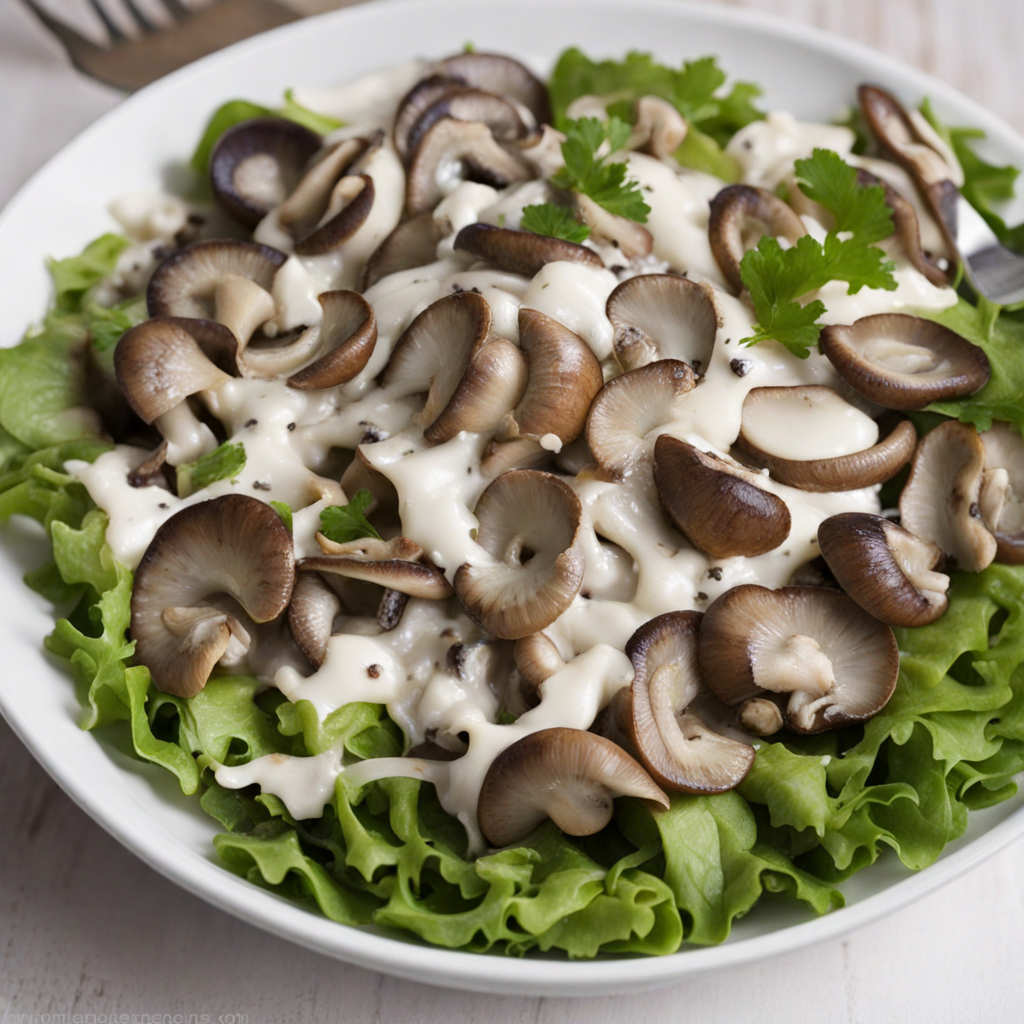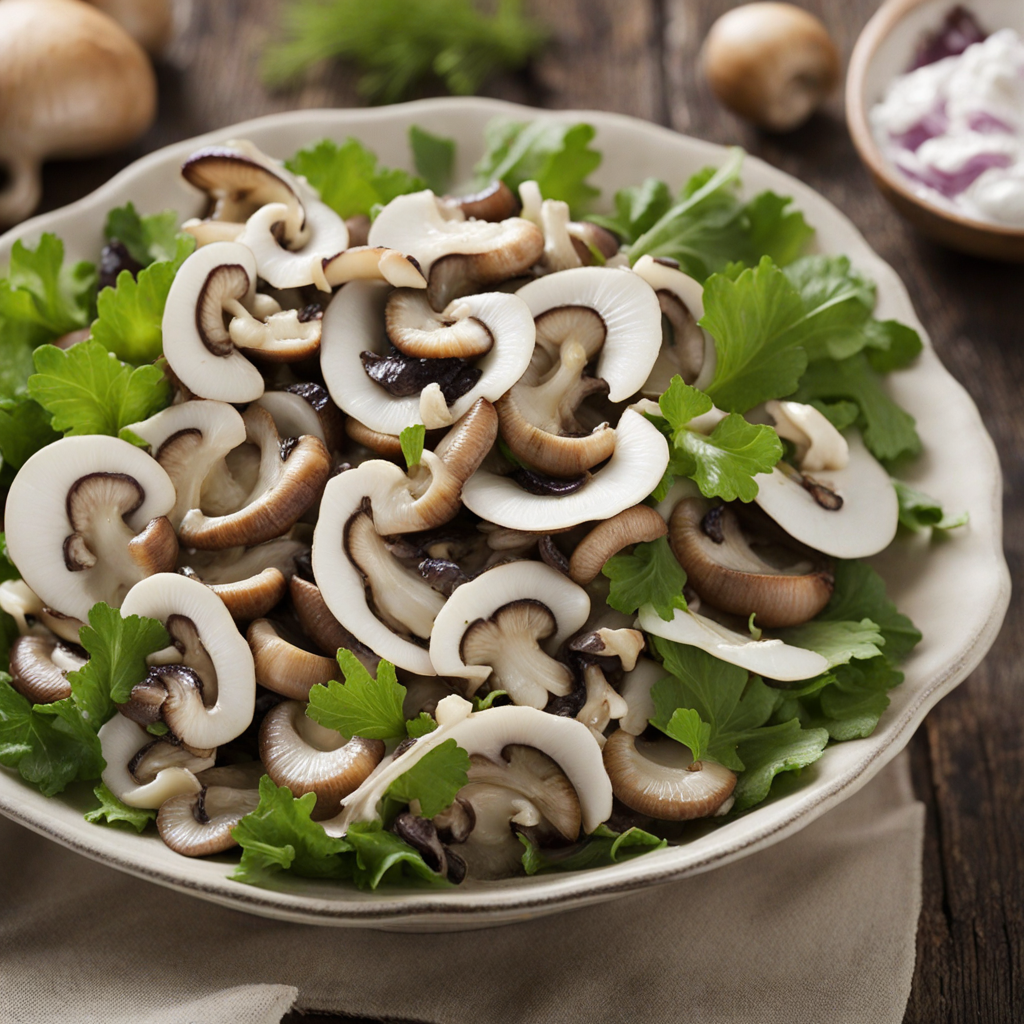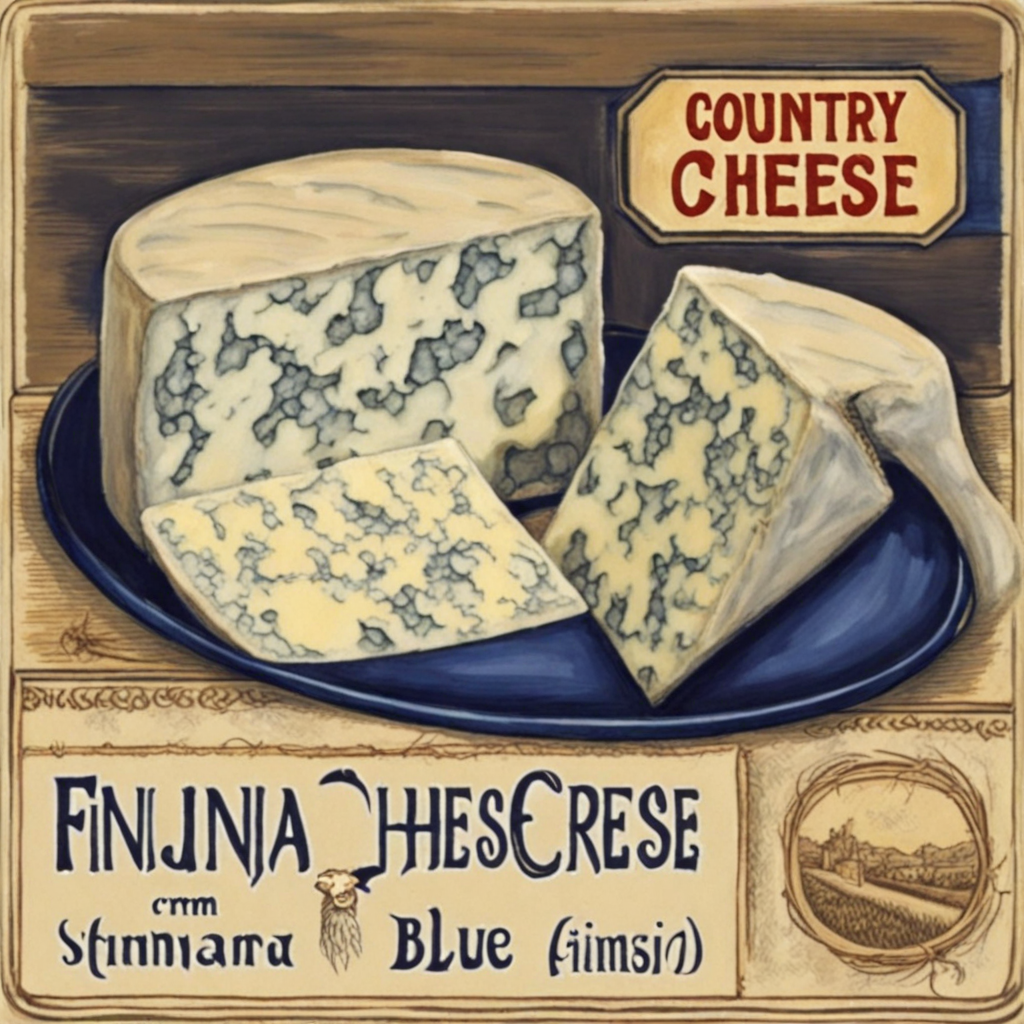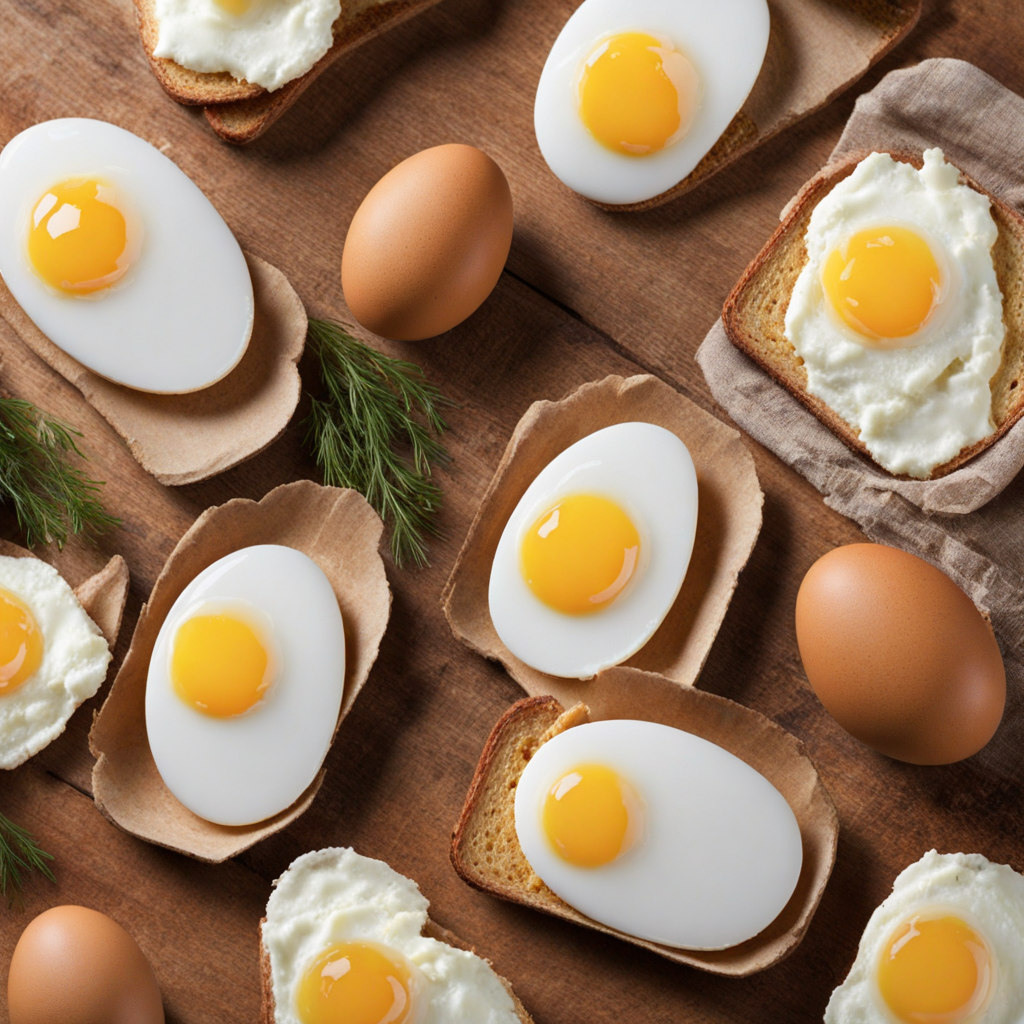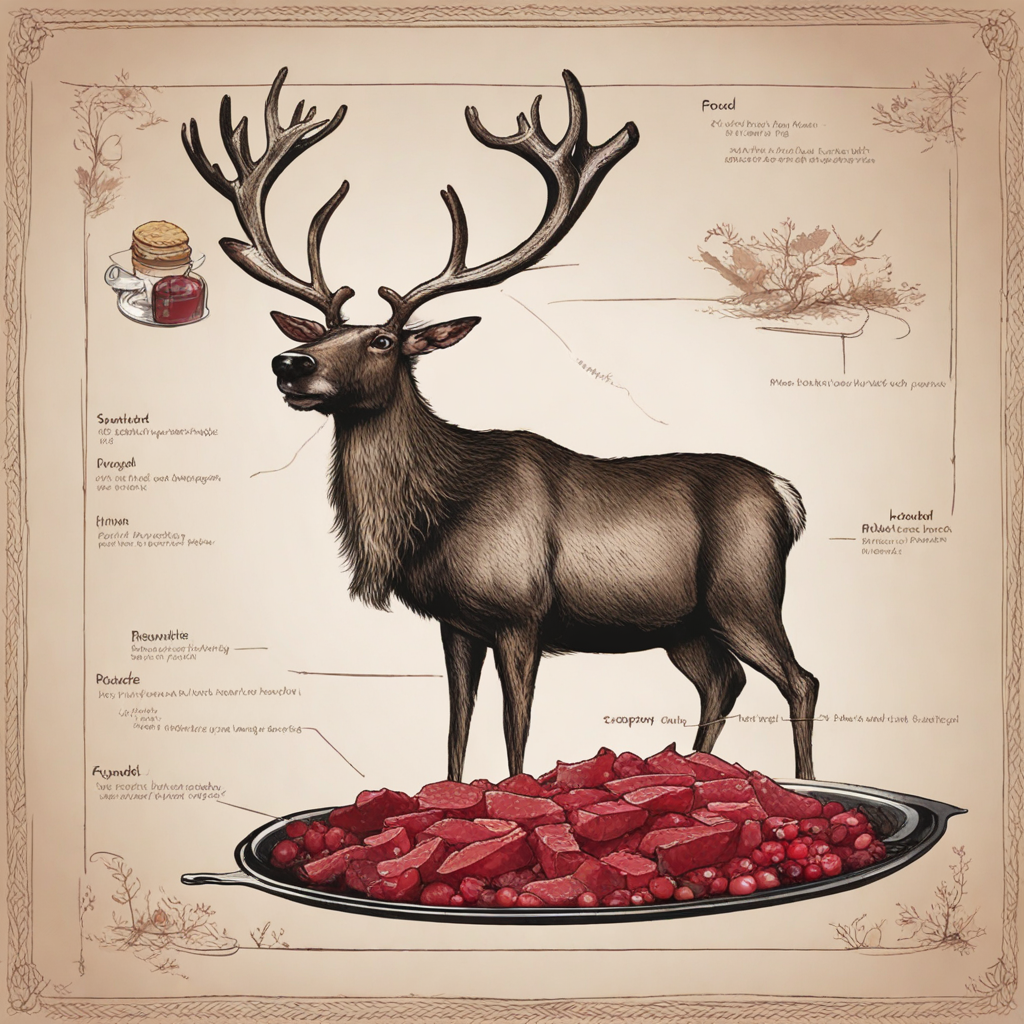Finnish Mushroom Salad
Finnish Mushroom Salad is a delightful and earthy dish that showcases the abundant wild mushrooms found in Finland’s pristine forests. The salad typically features a variety of foraged mushrooms, such as chanterelles, porcini, and even more exotic varieties when in season. These mushrooms are often sautéed to enhance their natural umami flavors and then combined with fresh ingredients like crisp cucumbers, tender greens, and fragrant herbs that give the dish a refreshing lift. The result is a vibrant medley of textures and tastes that highlight the essence of Finnish nature. In addition to the mushrooms, the salad is often dressed with a light vinaigrette made from locally sourced ingredients, such as rapeseed oil or apple cider vinegar. A sprinkle of sea salt and freshly cracked black pepper elevates the flavors, while a touch of dill or chives adds a burst of herbaceous brightness. Some variations may also incorporate pickled vegetables or a dollop of creamy Finnish sour milk, known as "viili," which provides a delightful tang and richness that perfectly complements the earthiness of the mushrooms. This salad not only celebrates the unique flavors of Finnish foraging but also embodies the country's culinary philosophy of using seasonal and local ingredients. It is often enjoyed as a side dish or a light main course during the summer months, bringing a taste of the Finnish wilderness to the dining table. Each bite transports you into the serene Finnish landscapes, making the Finnish Mushroom Salad a must-try for anyone looking to explore new culinary horizons.
How It Became This Dish
Sienisalaatti: A Tasty Tradition from Finland #### Origins of Sienisalaatti Sienisalaatti, or mushroom salad, is a beloved dish in Finnish cuisine, reflecting the deep connection between the Finnish people and their natural surroundings. The roots of this dish can be traced back to a culture that has long revered the abundance of mushrooms found in the vast Finnish forests. For centuries, foraging for wild mushrooms has been part of the Finnish way of life, not only for sustenance but also as a cherished social activity that brings families and friends together during the mushroom-picking season. The early inhabitants of Finland, including the Sámi people, relied heavily on local flora and fauna for their diet. Mushrooms, rich in nutrients and flavor, were harvested and consumed in various forms. The traditional knowledge of which mushrooms were safe to eat was passed down through generations, intertwining with Finnish folklore and cultural practices. The use of mushrooms in salads likely arose as a practical way to utilize the seasonal bounty while creating dishes that were both nutritious and flavorful. #### Cultural Significance Sienisalaatti is more than just a dish; it represents the essence of Finnish culture. In Finland, mushrooms hold a place of reverence, often celebrated in literature, art, and festivals. The annual mushroom-picking season, typically from late summer to early autumn, is a significant event that fosters a sense of community. Families venture into the woods together, sharing tips and stories as they gather edible fungi. This tradition of foraging not only highlights the importance of mushrooms in Finnish cuisine but also reinforces the bond between people and nature. The cultural significance of Sienisalaatti also lies in its versatility. While the basic recipe may feature a combination of pickled or sautéed mushrooms, onions, and cream, variations abound. Each family often has its own recipe, passed down through generations, representing their unique tastes and traditions. This adaptability allows Sienisalaatti to be served at various occasions, from festive gatherings to everyday meals. In Finnish homes, Sienisalaatti is commonly served as a side dish, complementing meat and fish dishes. It often appears during special celebrations such as Midsummer, Christmas, and Easter, where it adds a touch of the forest to the festive table. Its creamy texture and earthy flavors evoke the essence of the Finnish landscape, making it a comforting reminder of home. #### Development Over Time As Finland modernized, so did its culinary practices. In the early 20th century, urbanization led to changes in food preparation and consumption. While traditional foraging continued, the rise of commercial mushroom farming also began to influence the availability of mushrooms. This shift allowed more people to enjoy mushroom-based dishes like Sienisalaatti without the necessity of venturing into the woods. In the post-World War II era, as Finland experienced economic growth and increased globalization, culinary influences from other countries began to seep into Finnish cuisine. Sienisalaatti adapted to these new influences, incorporating ingredients like sour cream, yogurt, and even exotic spices. This evolution was not without controversy; some purists argued that the essence of traditional Finnish dishes was being lost. However, many embraced the changes, celebrating the innovation and diversity that came with globalization. The late 20th century saw a resurgence of interest in traditional Finnish foods, as chefs and home cooks sought to reconnect with their culinary heritage. The Slow Food movement, emphasizing local and seasonal ingredients, played a significant role in this revival. Sienisalaatti was once again highlighted as a quintessential Finnish dish, with an emphasis on using locally foraged mushrooms. This renewed appreciation for wild ingredients coincided with a growing interest in sustainability and environmental consciousness, further solidifying its place in contemporary Finnish cuisine. Today, Sienisalaatti is enjoyed both in homes and in restaurants across Finland. Its popularity has also spread beyond Finnish borders, with Finnish diaspora communities sharing their culinary traditions in other parts of the world. As a symbol of Finnish identity, Sienisalaatti serves as a delicious reminder of the country’s rich natural landscape and the importance of preserving its culinary heritage. #### Modern Interpretations and Variations In contemporary Finnish cuisine, Sienisalaatti has evolved into a canvas for culinary creativity. Chefs experiment with different types of mushrooms, such as chanterelles, porcini, and even more exotic varieties. The use of fresh herbs, such as dill or parsley, adds a refreshing twist, while nuts and seeds contribute unexpected textures. Some modern recipes incorporate a variety of vegetables to create a more colorful and nutrient-dense dish, appealing to health-conscious diners. Moreover, the rise of plant-based diets has prompted many to explore vegan versions of Sienisalaatti. By replacing traditional dairy ingredients with cashew cream or plant-based yogurt, chefs have made it possible for everyone to enjoy this classic dish without compromising on flavor. In Finland, Sienisalaatti is often celebrated during food festivals, where foragers and chefs unite to showcase the best of local produce. These events not only highlight the versatility of mushrooms but also emphasize the importance of sustainable foraging practices. Educational workshops often accompany these festivals, teaching participants how to identify edible mushrooms and prepare them safely. #### Conclusion Sienisalaatti is a dish steeped in history, culture, and community. From its origins in the Finnish wilderness to its modern interpretations, it showcases the resilience and adaptability of Finnish cuisine. As the world continues to evolve, Sienisalaatti remains a beloved symbol of the connection between the Finnish people and their natural environment—a celebration of tradition, innovation, and the enduring joy of gathering around the table with loved ones. Whether enjoyed at a festive feast or as a simple side dish on a quiet evening, Sienisalaatti encapsulates the heart of Finnish culinary heritage, reminding us all of the richness that comes from nature’s bounty.
You may like
Discover local flavors from Finland


